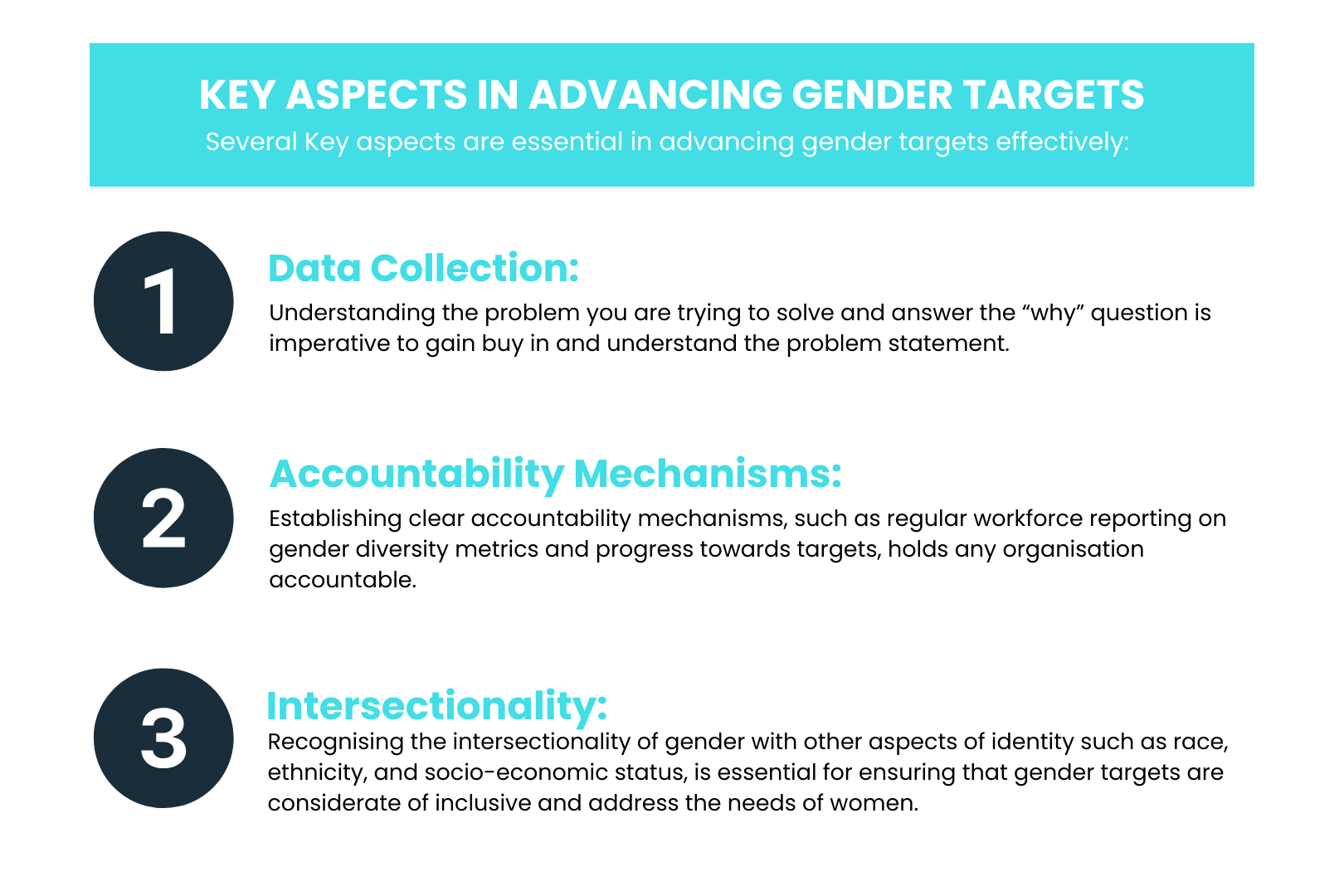Gender targets or quotas are a proactive measure aimed at increasing the representation of women and challenging traditional boundaries that hinder gender equality.
Targets
prescribe a common language and objective for an organisation; they can measure progress, identify dependencies or hurdles, and recognise achievements. Targets shouldn’t be confused as
Quotas. Quotas can sometimes can be perceived as “fixed” or imposed; whereas targets should be ideal state, maintain flexibility and appear like a stretch; but not impossible to reach.
This article explores strategies for achieving gender targets here in Australia, focussing on organisational policies, cultural shifts and individual advocacy as crucial areas for progress.
Organisational Policies:
One of the many primary approaches to advancing gender targets is through the implementation of organisational policies that promote diversity, equity and inclusion (DE&I).
The latest updates to the Anti-Discrimination and Human Rights Legislation Amendment (Respect at Work) Act 2022 (Respect@Work Act 2022), imposed a shift in responsibility on organisations, which are now legally required to provide a safe and respectful workplace for their employees. Having transparent policy positions and clear reporting on what organisations do to create positive action on workplace discrimination, sexual harassment and victimisation is a clear foundational and legal duty.
Further, organisations can adopt greater measures such as setting targets for female representation on boards and in leadership positions, implementing transparent recruitment and promotion processes, undertake gender pay gap analysis, as well as offering support programs for women in the workforce to name a few. Additionally, establishing mentorship and sponsorship programs can provide women with opportunities for professional development and advancement, to encourage and promote greater balance in a traditional workplace demographic.
Cultural Shifts:
Achieving gender targets requires addressing entrenched cultural norms and biases that perpetuate gender inequality. Cultural shifts involve challenging traditional stereotypes and perceptions about gender roles, fostering an inclusive work environment, and promoting awareness and education on gender issues. Initiatives such as Inclusive@work reporting via Diversity Council of Australia, offering diversity training, unconscious bias workshops, and inclusive language policies can help create a culture that values diversity and promotes equal opportunities for all individuals. Furthermore, promoting work-life balance initiatives, such as flexible working arrangements and parental leave policies, can support women in balancing their professional and personal responsibilities, thus removing barriers to career advancement.
Individual Advocacy:
Individual Advocacy plays a crucial role in advancing gender targets by empowering women to advocate for themselves and others. This can involve speaking up about experiences of discrimination or bias, creation of employee networks and diversity event sponsorship; and supporting other women in their career aspirations. Additionally, men can act as allies (See Champions
of
Change) by actively promoting gender equality, challenging sexist attitudes and behaviours, and advocating for policies that support women's advancement. By fostering a culture of allyship and solidarity, individuals can contribute to breaking down barriers and creating a more inclusive and equitable society.
Long Term Perspective:
Achieving gender targets requires a long-term perspective and sustained effort to create an inclusive working environment for those to thrive. You simply can not create diversity if your culture does is not inclusive. It is essential to recognise that progress may be gradual and to remain committed to the goal of gender equality over the long term.












